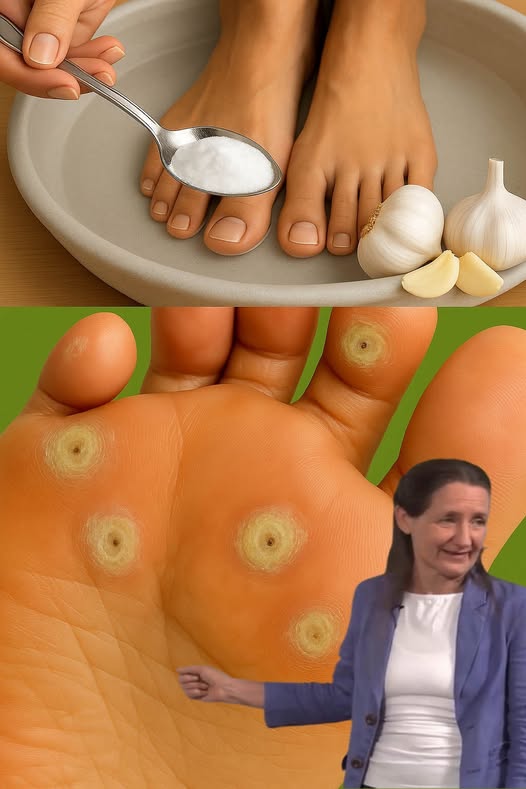Skin tags—those tiny, soft growths on your neck, underarms, or other folds—may be harmless, but they can be a source of frustration or embarrassment for many. While there are medical treatments available, some prefer to explore natural alternatives before booking a dermatology appointment. One such home remedy that’s gained popularity over time is garlic. Yes, garlic—the flavorful ingredient found in nearly every kitchen—may have more to offer than just culinary flair. Rich in natural compounds, garlic has been used in traditional skin remedies for generations. But can it really help remove skin tags Let’s take a look at the science, the method, and the safety precautions behind this natural approach.
What Are Skin Tags, and Why Do They Form
Skin tags, or acrochordons, are small, benign growths made of skin and connective tissue. They usually pop up in areas where skin rubs together, such as:
- Neck
- Underarms
- Eyelids
- Under the breasts
- Groin
Common causes include:
- Friction from clothing or skin folds
- Hormonal changes (especially during pregnancy)
-
Sponsored
Aging (especially after 40)
- Weight gain or insulin resistance
Though painless, they can become irritated or inflamed, prompting many to seek safe removal methods.
Why Garlic The Traditional Remedy Explained
Garlic (Allium sativum) has long been a staple in herbal medicine. Known for its antimicrobial, antioxidant, and anti-inflammatory properties, garlic owes much of its power to a compound called allicin.
Traditionally, garlic has been used to help treat skin infections, fungal issues, and more. The belief is that its sulfur-rich compounds can dry out excess skin tissue—such as a skin tag—causing it to shrink and fall off over time.
While this remedy lacks strong clinical studies specifically on skin tag removal, its traditional uses and biochemical properties offer a natural, low-cost option worth considering—with care.
How Garlic May Help with Skin Tags
Although not scientifically proven as a skin tag cure, garlic may provide the following skin-supporting benefits:
1. Drying Action
Garlic’s natural enzymes and acids may dry out skin tissue, potentially leading to the breakdown of the tag.
2. Antioxidant Support
Allicin helps fight free radicals and supports healthy skin regeneration, potentially improving skin appearance around the tag.
3. Antibacterial Protection
Garlic’s antimicrobial properties help keep the area clean, reducing the risk of infection or inflammation during home treatment.
How to Use Garlic on Skin Tags (The Safe Way)
Sponsored
If you’re curious to try garlic at home, here’s a simple step-by-step method:
DIY Garlic Paste Method
You’ll Need:
- 1 fresh garlic clove
- A small bandage or medical tape
- Petroleum jelly or coconut oil (optional for skin protection)
Steps:
- Clean the area gently with warm water and dry it.
- Crush one clove of garlic into a fine paste.
- (Optional) Apply petroleum jelly around the skin tag to protect nearby skin.
- Place a small amount of garlic paste directly on the tag.
- Cover with a bandage and leave on for 30 minutes to 1 hour.
- Rinse thoroughly with warm water.
- Repeat daily for up to 7 days, observing changes.
Important Safety Tips
- Always do a patch test first—apply garlic to a small area of skin for 15 minutes and check for irritation.
- Do NOT leave garlic on overnight. It can cause burns or blisters.
- Discontinue use if you experience stinging, redness, or discomfort.
- Do not apply garlic to broken skin, bleeding areas, or near the eyes or genitals.
What Kind of Results Can You Expect
Results vary by individual and depend on the size and location of the tag. Some people find the tag shrinks or dries out after a few days, while others notice little or no change.
Garlic may help with:
- Mild drying or shrinking of skin tags
- Keeping the area clean and irritation-free
-
Sponsored
Feeling in control of your skincare with natural solutions
However, for larger, stubborn, or inflamed skin tags, medical treatment remains the safest option.
When to See a Doctor Instead
Always consult a dermatologist if:
- The skin tag changes in size, color, or shape
- It becomes painful, bleeds, or shows signs of infection
- It’s located near sensitive areas (eyes, genitals)
- You have a history of allergic reactions to garlic or sensitive skin
Professional options include freezing (cryotherapy), burning (cauterization), or surgical removal—all quick and typically done in-office.
Natural Doesn’t Always Mean Safe—Use Caution
Garlic is a powerful natural remedy, but it’s also potent and can irritate sensitive skin. While it’s promising for some, it’s not a guaranteed fix and should be used responsibly.
Still, if you’re looking for a natural, budget-friendly solution before trying medical options, garlic may be worth a try—just start slow, monitor your skin closely, and prioritize safety above all.
Curious to try it Start small and see how your skin responds.
Know someone who prefers natural skincare Share this article with them and spread the word about safe, simple remedies.



